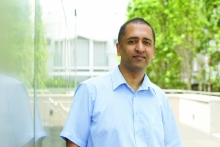CEE Seminar: Estimating Design Floods in a Warming Climate - Gaps, Challenges & The Way Forward

Professor & Future Fellow
Civil & Environmental Engineering
University of New South Wales
Sydney, Australia
Abstract:
A lot has been said and written about climate change and how it may make floods more frequent and extreme. In this talk I outline what needs to change in a warmer climate for design floods to increase or decrease, present data based on evidence (as opposed to model based) for all the changes to date, and suggest what I feel is a sensible way design flood estimation should be approached in this new climate we are in. Specifically, I show evidence for clear changes in the spatial and temporal patterns associated with extreme storms, along with an increase in design intensities for shorter duration events. These changes present the clearest evidence to date that design flood magnitudes for urban catchments across the world are increasing, a change that urgently needs to be accepted and factored into our planning guidelines given the implications to our existing stormwater infrastructure and society in general.
Relevant References:
Wasko, C. and A. Sharma (2015). "Steeper temporal distribution of rain intensity at higher temperatures within Australian storms." Nature Geoscience 8(7): 527-529.
Wasko, C., A. Sharma and F. Johnson (2015). "Does storm duration modulate the extreme precipitation-temperature scaling relationship?" Geophysical Research Letters 42(20): 8783-8790.
Wasko, C., A. Sharma and S. Westra ( 2016). "Reduced spatial extent of extreme storms at higher temperatures." Geophysical Research Letters 43: 4026–4032.
Woldemeskel, F. and A. Sharma (2016). "Should flood regimes change in a warming climate? The role of antecedent moisture conditions." Geophysical Research Letters 43.
Bio:
Ashish Sharma is a professor in hydrology/hydroclimatology/water resources, based at UNSW in Sydney. Sharma is engaged with research on finding ways to meaningfully assess the impact of climate change on hydrology and water resources, assess (and reduce) modelling uncertainty, estimate design floods in a more meaningful way, issue seasonal forecasts for water resources management, develop better models that simulate both hydrology and ecology in an increasingly warming world, and many other things mostly aligned around his strengths in using statistical analysis and methods for a range of hydrologic problems. He also serves on the Technical Committee of the forthcoming Australian Rainfall and Runoff (ARR), with some very knowledgeable members who continue to enlighten him on the big challenges faced by practicing hydrologists in Australia and abroad. The forthcoming ARR will be the first design guideline on how to factor in climate change in hydrologic practice.
Share
Download
Upcoming Events
-
MSE Special Seminar: Architecting 3D Complex Materials for Sustainability
-
MSE Special Seminar: Decarbonizing Industries for a Climate-resilient Future - From Renewable Energy to Sustainable Material Recovery
-
CEE Seminar: BIM and the Digital Twin
-
MSE Special Seminar: Revolutionizing Battery Technology - Engineering Quantum Materials for Enhanced Safety and Performance in Solid Electrolytes
-
MSE Special Seminar: Designing Sustainable Soft Matter from the Molecule Up
